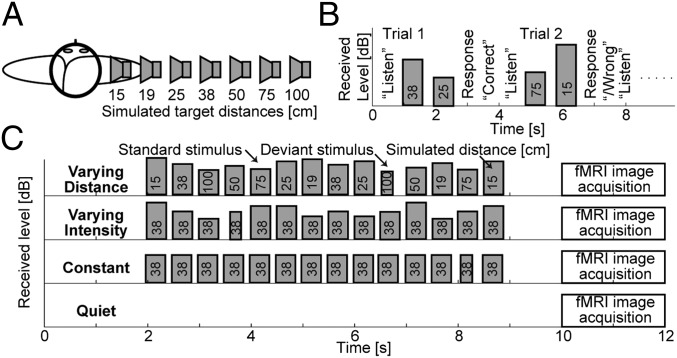Fig. 1.
Experimental design. (A) Simulated source locations. (B) Timing of events during trials in the behavioral experiment: The instruction “listen” appeared on the screen, followed by presentation of two stimuli from different distances. Listeners responded by indicating whether the second stimulus sounded more or less distant than the first stimulus. On-screen feedback was provided. Presentation intensity was randomly roved for each stimulus so that received intensity could not be used as a cue in the distance discrimination task. (C) Timing of stimuli and of image acquisition during one imaging trial in the fMRI experiment, shown separately for the four stimulus conditions used in the experiment. Height of the stimulus bars corresponds to the received stimulus intensity at the listeners’ ears. In the varying distance condition, the stimulus distance changed randomly, whereas the stimulus presentation intensity was fixed (thus, both the perceived distance and intensity varied). In the varying intensity condition, the stimulus distance was fixed, whereas the received intensity varied over the same range as in the varying distance condition. In the constant condition, the 38-cm stimulus was presented repeatedly at constant intensity. In these active stimulation conditions, the listener’s task was to detect deviant stimuli that were shorter than the standard stimuli. No feedback was provided. In the fixation condition, no auditory stimuli were presented, and the subjects were instructed to look at a point on the screen.

